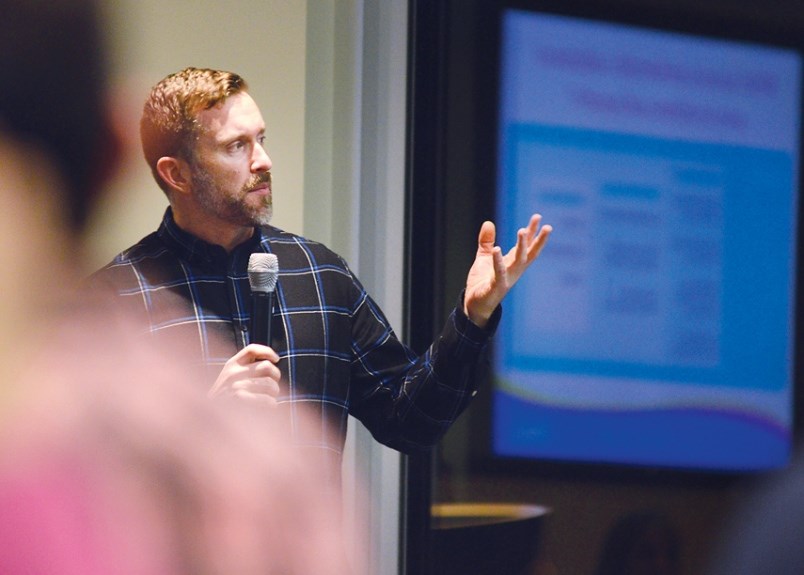Less than one per cent of confirmed COVID-19 cases in the Vancouver Coastal Health (VCH) region are located on the Upper and Lower Sunshine Coast, from Langdale to Lund.
“In the Sunshine Coast area we have seen very few cases. Less than one per cent of all cases in VCH have been in the Sunshine Coast and Powell River areas,” said VCH deputy chief medical health officer Dr. Mark Lysyshyn in a March 26 briefing with Sunshine Coast Regional District (SCRD) directors.
At the time of the briefing, VCH had reported 339 cases, putting the possible number of cases at three for the Sunshine Coast, including Powell River.
Approximately 40 per cent of people who contracted COVID-19 in the VCH area are located in the Vancouver area. At 25 per cent, the North Shore has the second highest number of cases. Of the people infected, 161 had recovered and 12 had died.
Following the presentation, Lysyshyn told Coast Reporter he could not comment on the exact number of cases or provide other details “to protect confidentiality of the small number of cases.”
Travel-related cases in Sechelt were confirmed by the Sunshine Coast COVID Physician Task Force earlier this month.
Lysyshyn, a former Sunshine Coast medical health officer, replaced Dr. Meenakshi Dawar, who had been scheduled to present to directors.
Lysyshyn said about two per cent of those infected in B.C. have died, which is consistent with the global mortality rate. Most deaths have been associated with the six outbreaks at long-term care facilities on the Lower Mainland, including the 12 VCH deaths. Similarly, about 80 to 85 per cent of people in B.C. have suffered from “mild disease,” which is consistent with global data.
In terms of transmission, Lysyshyn said the science is “still not out” on whether the virus, which spreads through respiratory droplets from coughing, runny nose and sneezing, can be contracted from people without symptoms. And even if it can be, “we do not believe that is the most important way that the disease will be spread,” he said.
He said testing strategies have evolved over the course of the outbreak. Current recommendations are to test people with compatible symptoms who may need to be hospitalized, health care workers and those associated with long-term care facilities. “But in the coming weeks, those testing criteria may be restricted further.”
Directors’ questions revolved mainly around the public health directives that have dramatically curtailed normal life for Sunshine Coast residents, including seeking clarity on social distancing and self-isolation.
The isolation period is 10 days for those with symptoms as long as all symptoms resolve, with the exception of a dry cough, which is not considered infectious, Dr. Lysyshyn said. Those who may have been in contact with the virus but do not have symptoms must isolate for the duration of incubation – 14 days. If they develop symptoms, they must isolate for 10 days.
He also encouraged people to refrain from making judgments about other people’s symptoms. “It’s not up to other people to observe them and decide whether they should isolate,” he said. Instead, those who believe they may have symptoms should use the online self-assessment tool, contact their health care provider or call 1-888-COVID19 or 811.



